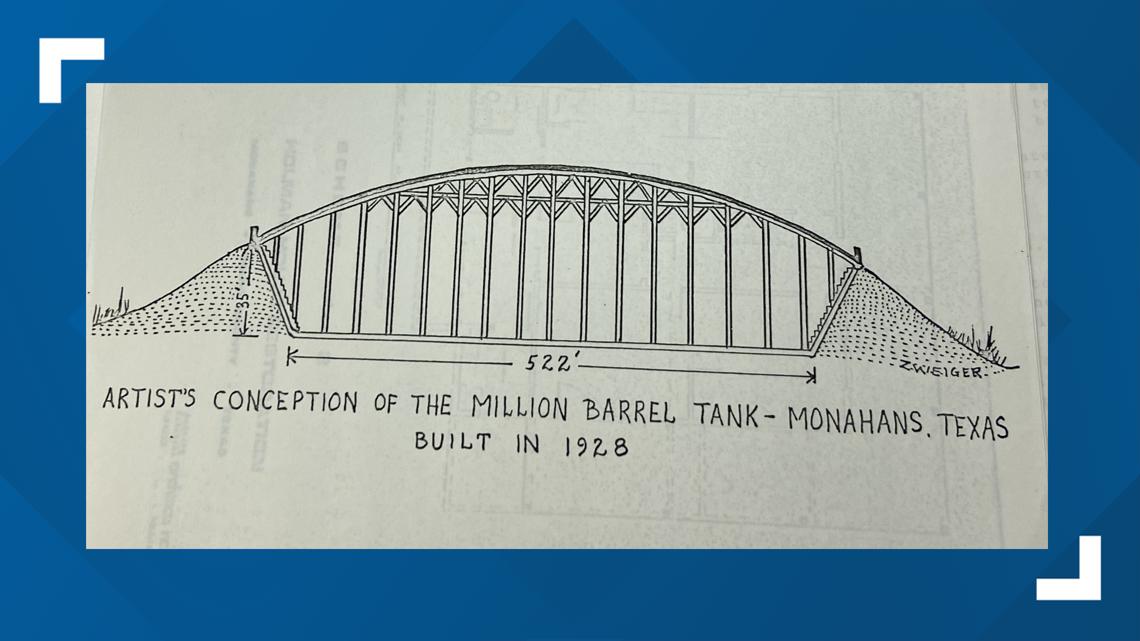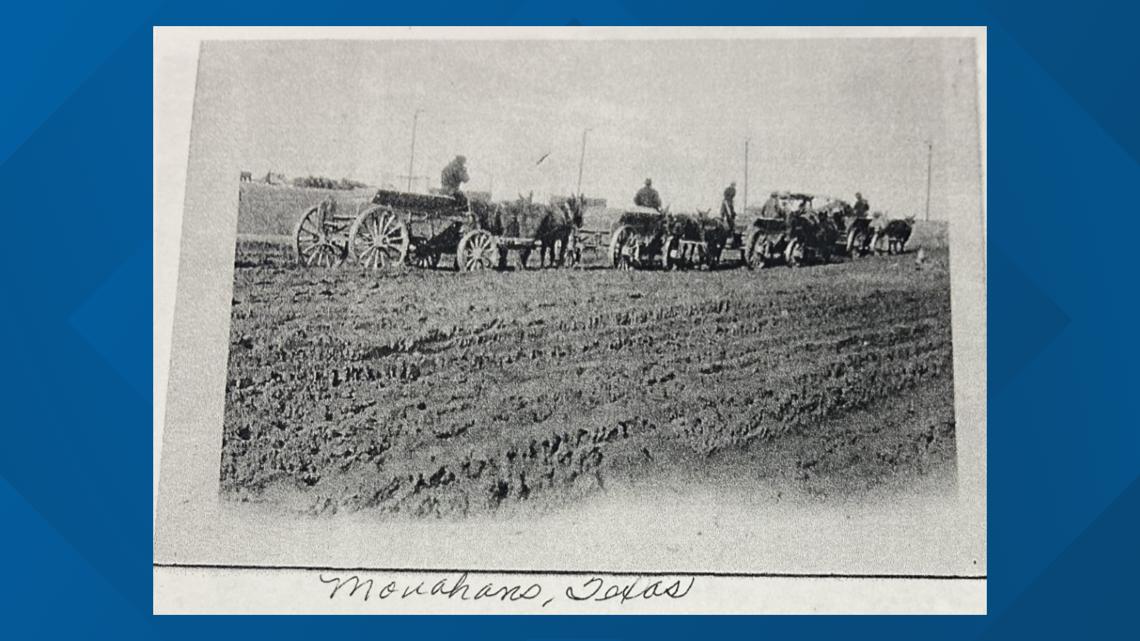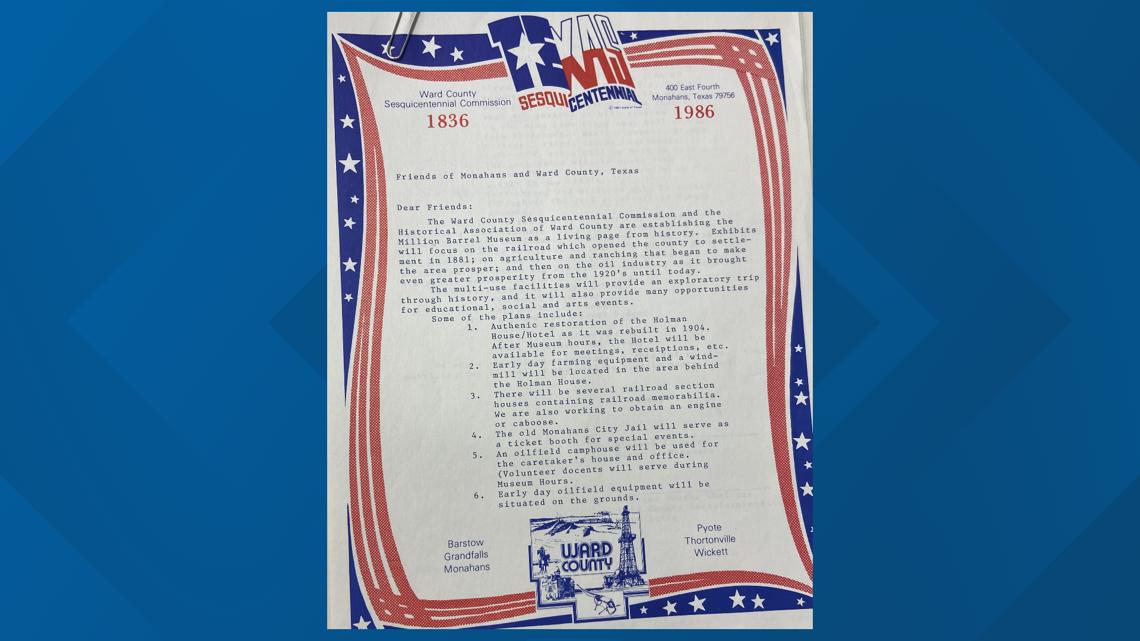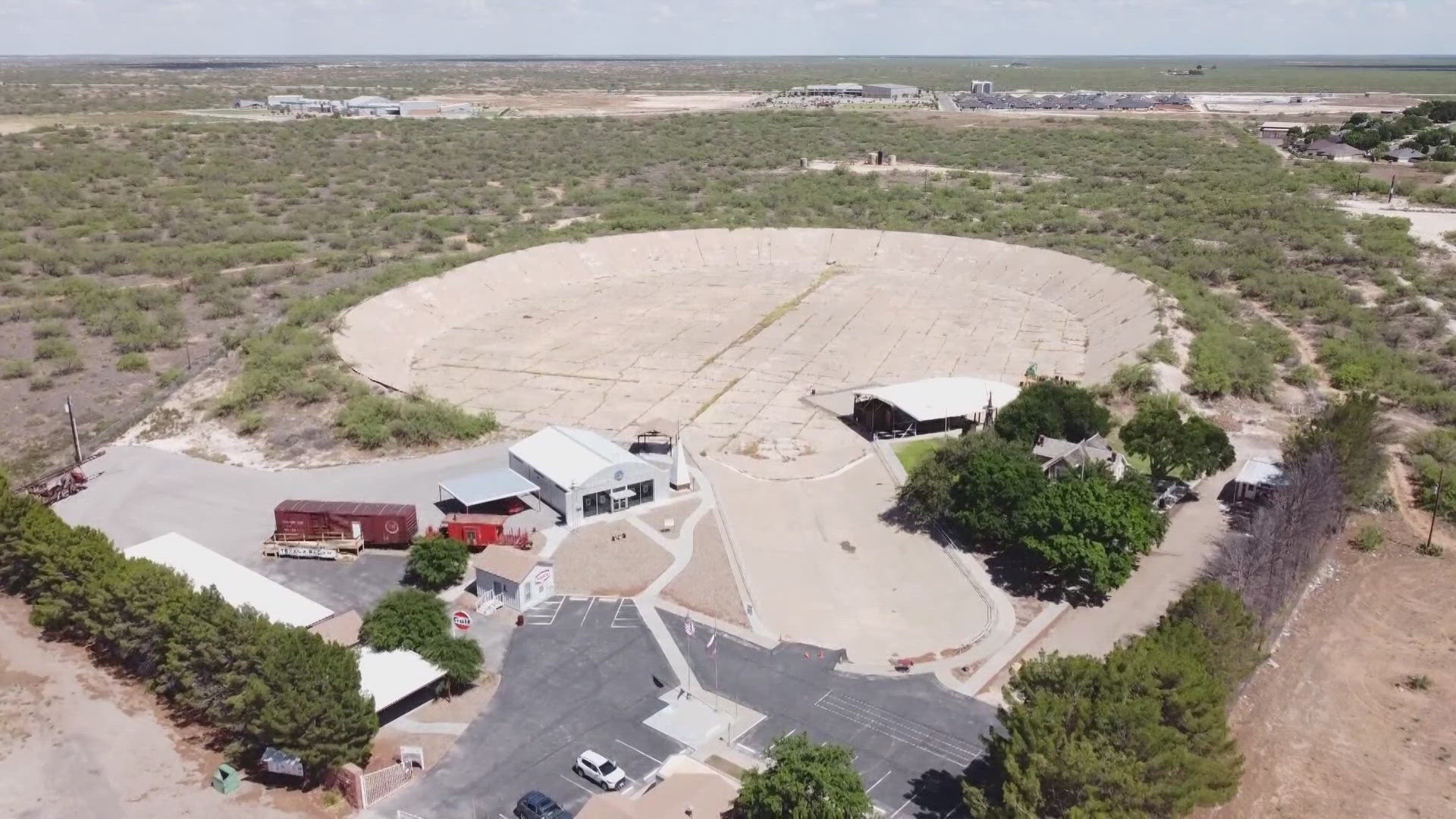MONAHANS, Texas — A man-made crater sits at the edge of the small town of Monahans, Texas. It's the town's very own cement bowl that caves in nearly 35 feet deep, with a vastness of 522 by 426 feet.
It's a dent in the ground that was dubbed the Million Barrel Tank and it's well-known for what it holds. Or rather, the lack thereof.
Before NewsWest 9 can dig into that, let's take a look at where the idea for this big hole in the ground first sprouted.
It all dates back as early as 1926, when the oil boom transformed Winkler and Ward County. Oil fields started making their appearance across West Texas. Drilling for oil in the Permian Basin was the answer producers such as the Roxana Petroleum Company, a branch off of Royal Dutch Shell plc, had been searching for.
It was the question about where they were going to put that oil, that was up in the air.
The Roxana Petroleum Company believed the answer was on the horizon after purchasing a piece of land in Monahans. A town that was put on the map a few years earlier when travelers of the Texas Pacific Railroad needed a place to stop and rest.
The branch of Shell Oil invested $250,000 to carve out an earthen dish that could hold a million barrels of crude oil. If truth be told, this one was expected to hold 1,084,000 barrels of oil.


"They needed a place to store the oil, so they dug out this enormous pit, and they did it all by hand," said Ward County Librarian Brenda Kizziar. "They brought in a crew of men that used Fresnos, which is a digging instrument and they used mules to pull these Fresnos similar to how a plow is used."
These men were brought in from out of town and they were nicknamed the "mule skinners." According to Kizziar, there was a tent city east of Monahans where the men would go home to rest, eat and come back to work around the clock.


But the hard work didn't seem to have paid off.
"Unfortunately, it did not work out," Kizziar said. "The barrel only held oil for one day after they'd discovered a leak in the foundation."
The producer no longer saw a future in the Million Barrel Tank. Therefore, by 1930, the tank in the middle of Texas' largest beach without an ocean, was left deserted.
As years went by, the super structure, or the oil tank's wooden lid, was taken down. According to records from the Ward County Library, the lumber was used in houses throughout the area.
Moments like in the 1940's, when the Sherriff's Posse used the tank as a parade ground, brought the deserted tank back to life. Or, in 1950, when 1,500 people from all over came to use the ring the size of nearly three football fields, as a big square dance floor.
"In 1957, the Million Barrel was purchased by a couple, Mr. and Mrs. Wayne Long, and they wanted to turn it into a reservoir where people could come out and bring their boats and ski, and they could do fishing and have it become a family spot," Kizziar said. "They named it Melody Park."
Dr. Wayne Long dreamt of filling the tank with water so it could be used as a recreational lake and park. Despite changing the name, Melody Park faced the same fate as the Million Barrel Tank. On October 5, 1958, it opened and closed on the same day because the water was leaking.
After Mr. Long passed away, his wife donated the Million Barrel Tank and its acreage to the Ward County Historical Commission in 1986.


The same year, the Ward County Sesquicentennial Commission and the Ward County Historical Association united their efforts to work on establishing it as a living page of the county's history.
In 1987, the Million Barrel Tank became the heart of the Million Barrel Museum. It is a museum that encompasses nearly 14 acres of land.
It's also where other pieces of Ward County history have been moved to into their own exhibits. Including the Holman House, which is the very first to move into the Million Barrel neighborhood of memories.
"The Holman House belonged to the Holman family, which was one of the founding families of Monahans," Kizziar said. "They owned one of the first hotels in Monahans and it burned down but was rebuilt in 1984."
The museum complex includes attractions such as the town's very first jail.
Meanwhile, artifacts such as farming and oil field equipment are on display just a few feet away from the Texas Pacific Railroad exhibit inside an old train car.
"Most of the memorabilia in the train museum was donated by the Higginbotham family because Mr. Higginbotham worked for TMP as a conductor for many years," Kizziar said.
The car also stores a mirrored, "endless" stretch of railroad tracks.
The Million Barrel Museum is also the home of the The Rattlesnake Bomber Base Museum.
It received its nickname following the history behind how the Pyote Air Force Base of the 1940's was built on land that was overwhelmed by rattlesnakes.
According to Kizziar, it was one of the largest training bases for B17 and B29 crews.
Inside this exhibit are pieces that were owned by the pilots, crews, the colonels and everyone that was on base and housed at the Rattlesnake. From original letters sent to families miles away, to the original cards the pilots used to played with to understand their equipment, sirens and so much more. At center stage, the original uniforms that were worn at the Pyote Air Force Base.
The neighborhood of memories continues with exhibits such as a collection of Coca Cola memorabilia, equipment that was used in the medical field decades ago and so much more.
Dreams of the Million Barrel Tank failed not once, but twice. Today, this hole in the ground serves as an anchor to dozens of living pieces of Ward County History.

